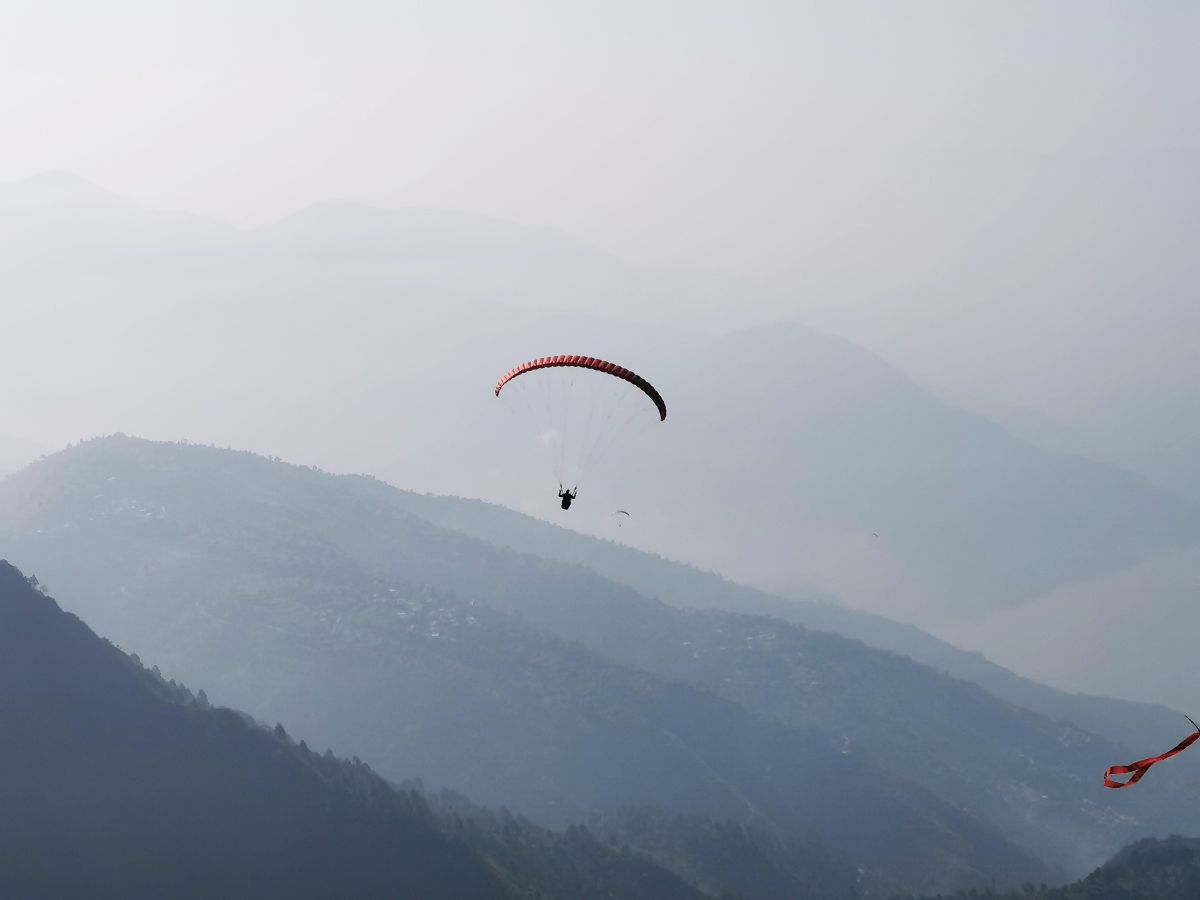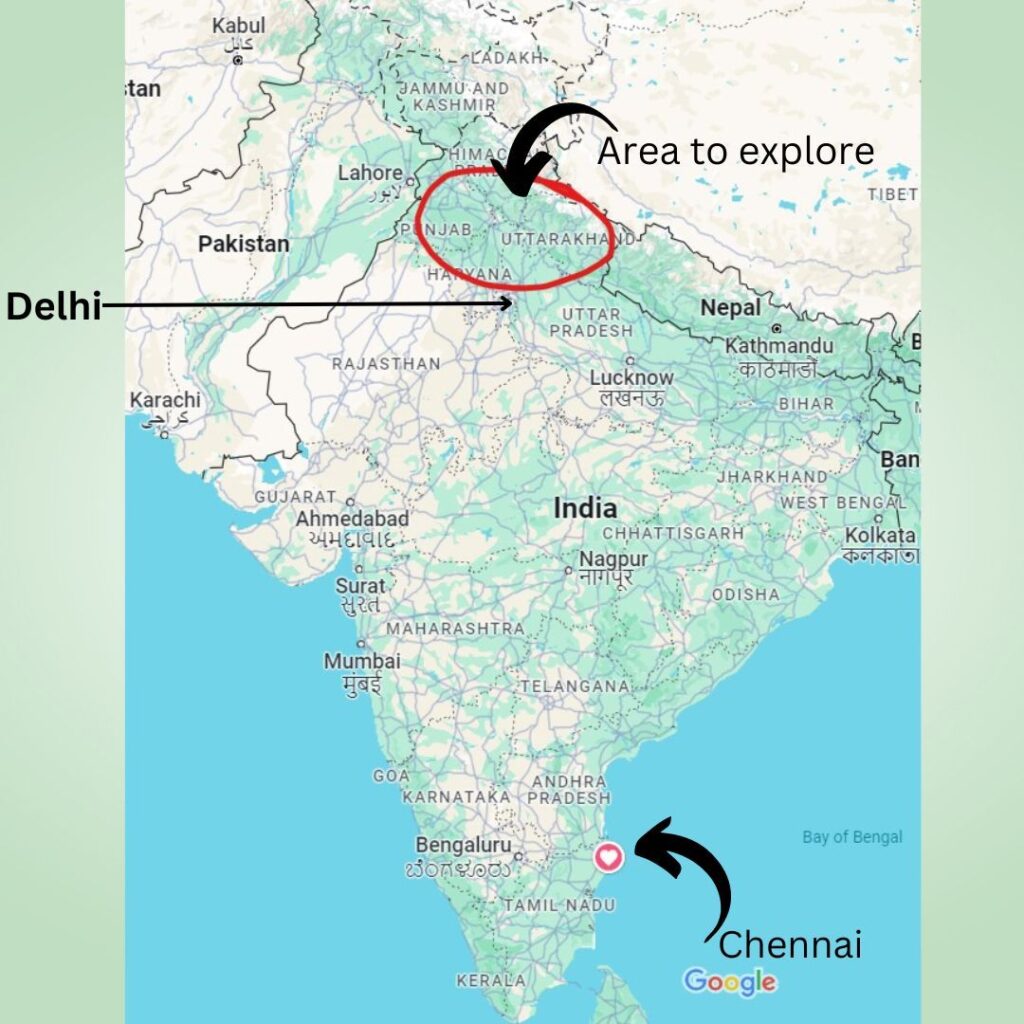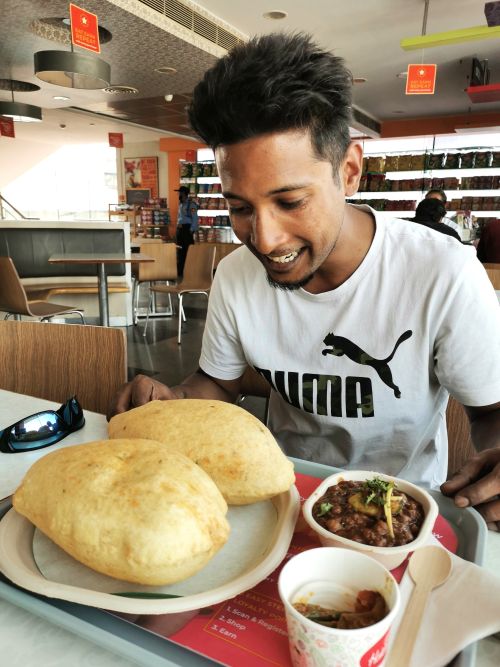Part 3 of a 3-part series
Once again I wish to acknowledge and thank my wonderful travel companion Shoba Nayar who edits my writing, and who’s careful eye and amazing suggestions helps bring alive stories from our travels!
Where in the world are we?
The Indian Himalayas!

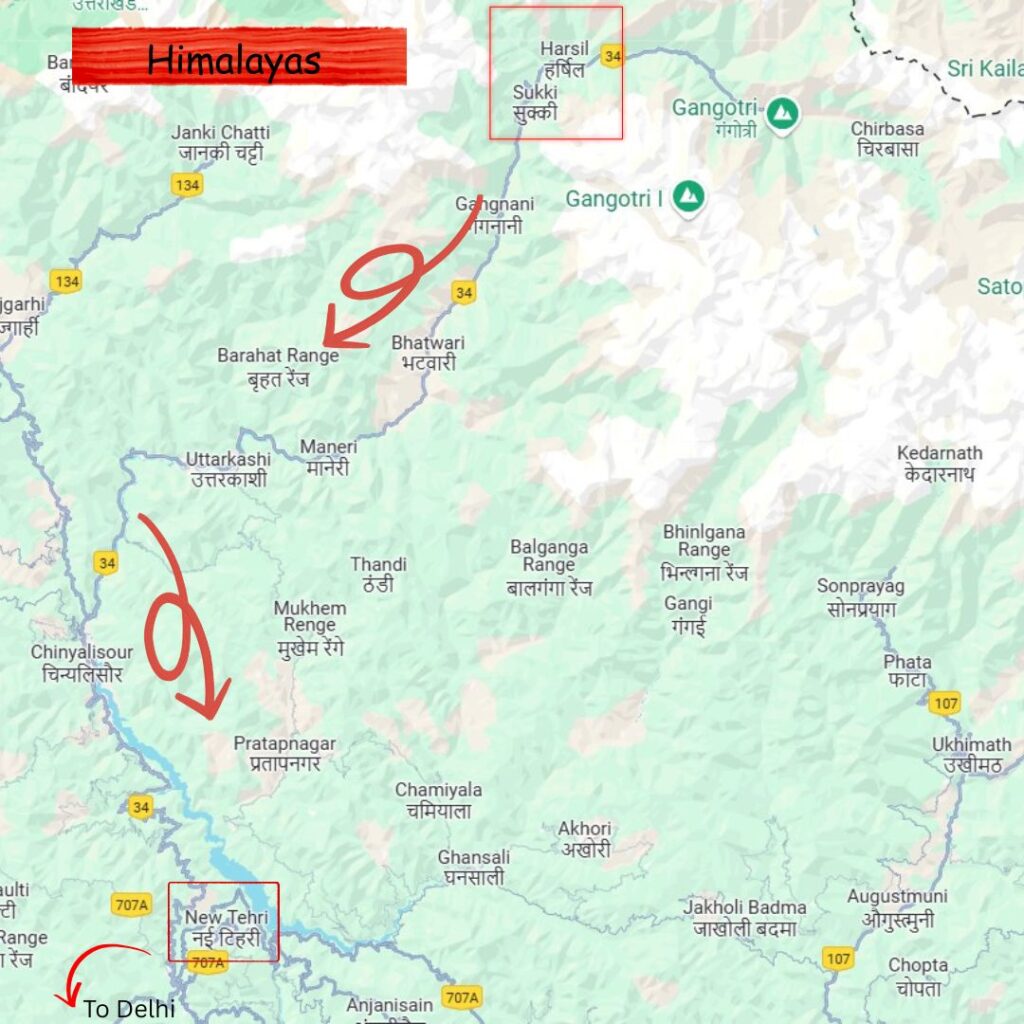
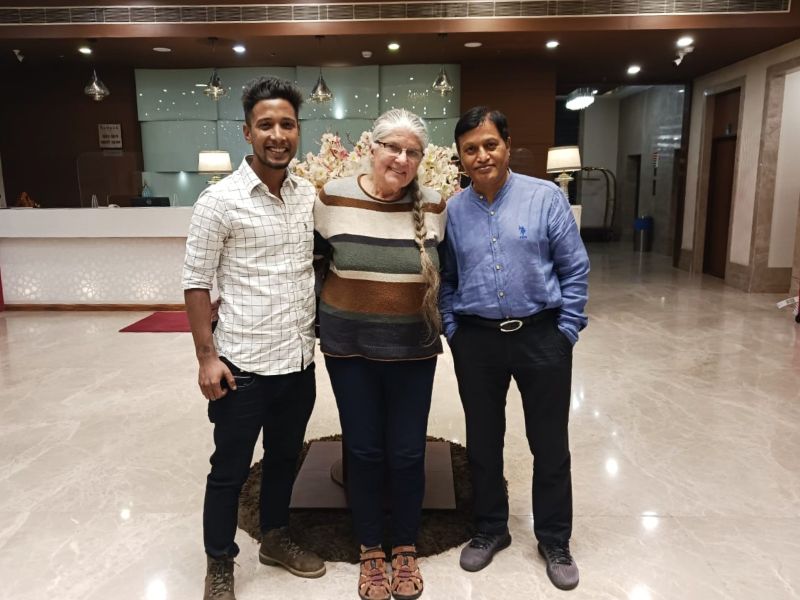
Harsil Valley Tibetan villages and Apple Orchards
With the Char Dham temple visits behind us, it was time to relax in the Tibetan villages and apple orchards around Sukki and Harsil about 1 hour down the road. We left Gangotri, crossed the Bhagirati River, and followed the road as it rose from the valley floor, snaking up the mountain and gaining altitude. We arrived at our accommodation in the hills of Sukki village, where we had two nights booked at ‘Harsil Cottages’. Checking in involved climbing several flights of outdoor stairs with our luggage to our rooms – no mean feat given the altitude is 3,000m (9,843ft)! The effort taxes the body and breathing is difficult; however, the breathtaking views up the valley from whence we had come made it all worth the effort.
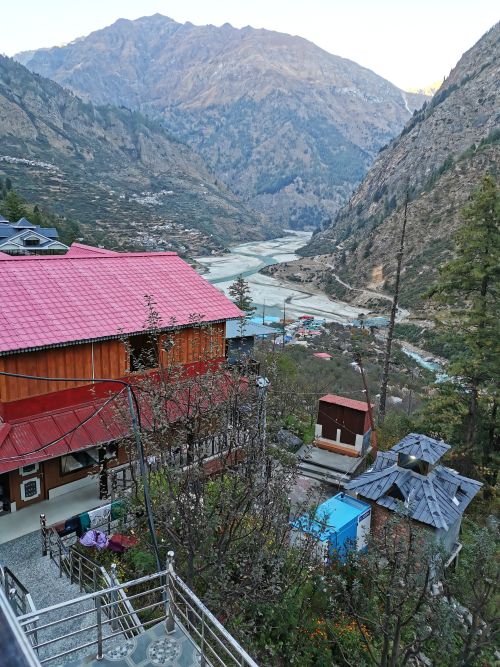
Large river flats dominate the valley floor, and the steep-sided mountains contain many villages where apples are grown for export in small orchards. Tibetan villages are being refurbished and upgraded to meet the growing tourist industry. However, and of great importance, they are being maintained in their original style, which dates back to when trading with Tibet was still brisk and lively.
We drove back to Harsil and had lunch before Kartik and Shoba headed for a small mountain track called ‘Lama Top’ that is steep, popular, and tough! At 3,000m (9,843ft), Lama Top is a sacred Buddhist site and the hike of about 5km return goes through dense forest to a place of mesmerizing views.
Don’t forget to click on the collages of photos to open them up and fully enjoy them
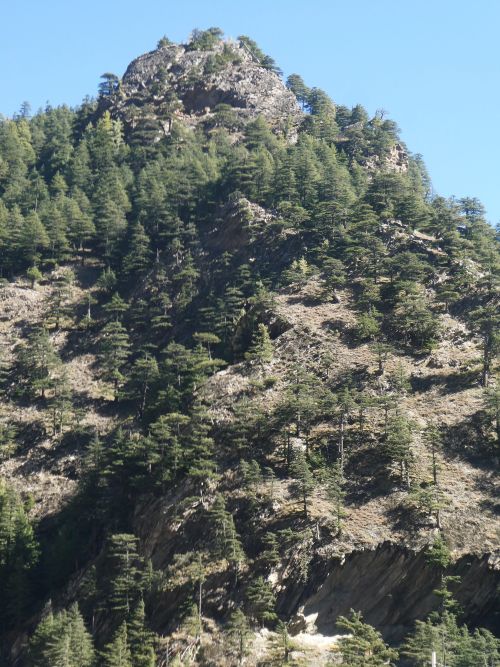

Exploring the village of Bagori

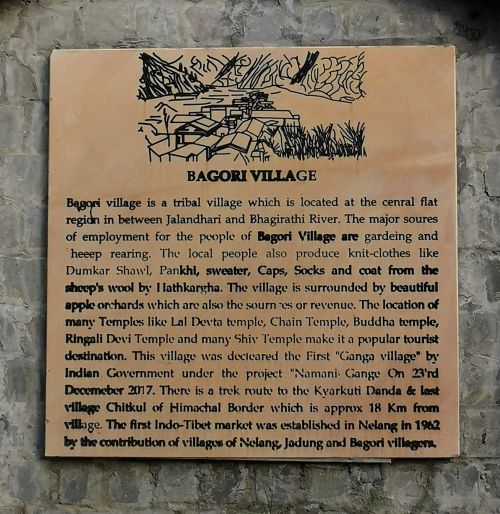
Alice and I were taken by Deepak, our driver, to a small Tibetan Village called Bagori, 2,745m (9,005ft), where we wandered the full length of the main street, now cobbled and lined with traditional houses of which some were already under preservation and repair.
Don’t forget to click on the collages of photos to open them up and fully enjoy them

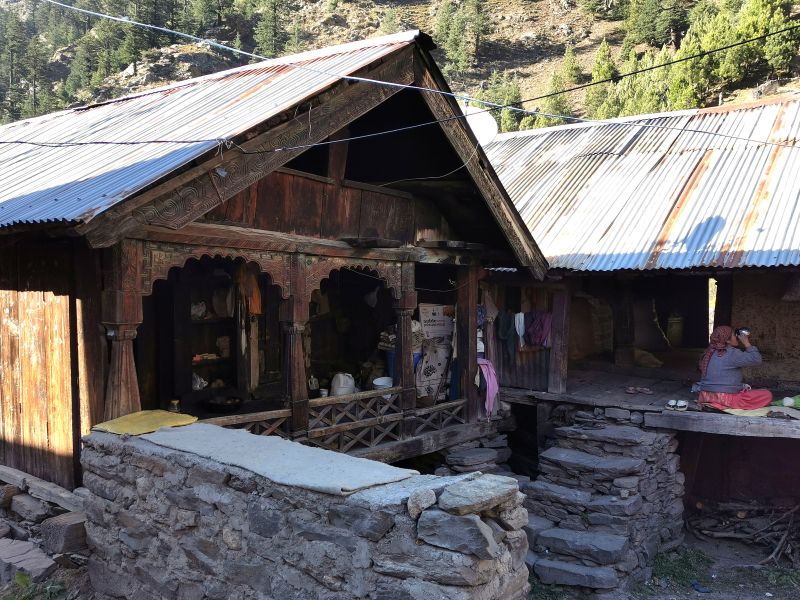
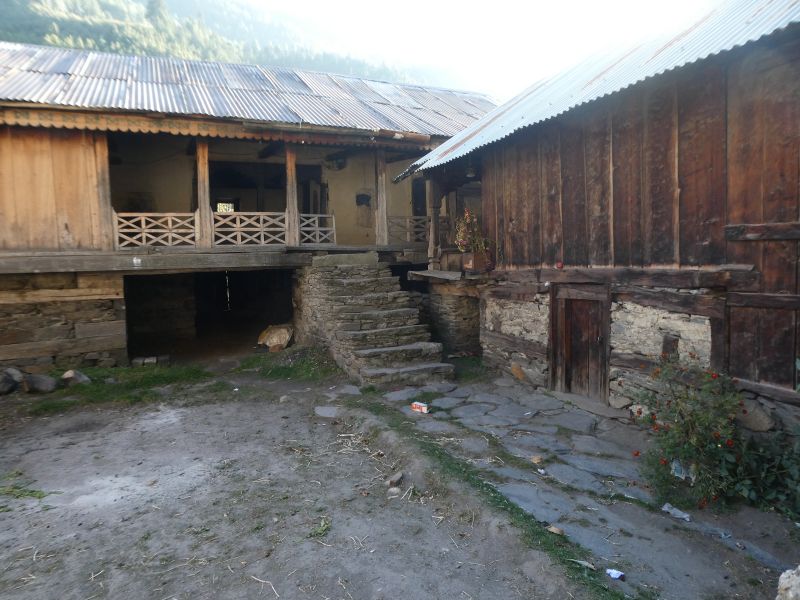

Near the entrance to the village is a beautiful information board with details of the village, the inhabitants—the Jadh Bhotiyas people—its location, crafts, temples, and history. Many of the local artisans were working in the sun in their front gardens, women in groups chatting and knitting, weaving, or chopping apples to dry in the sun for local dishes and the winter, which was ‘just around the corner’.


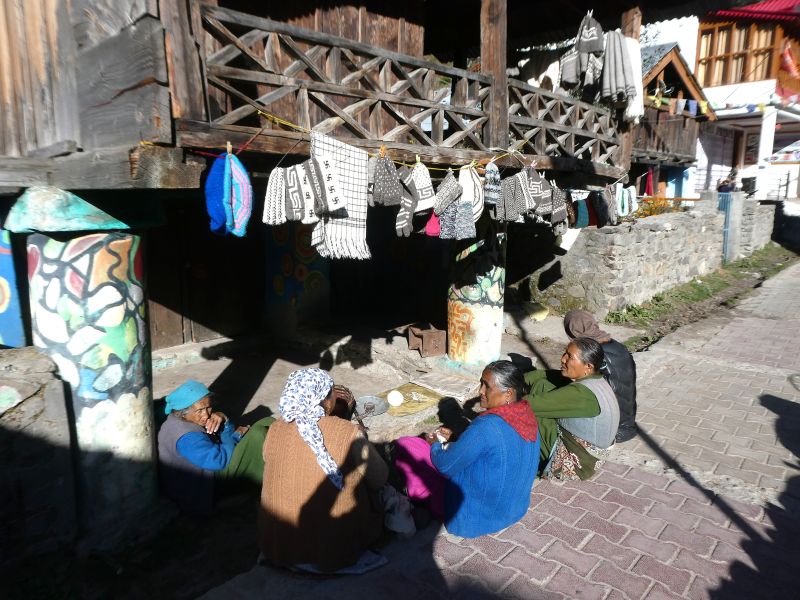

We passed a Buddhist monastery and a lovely small stupa (Buddhist Monument) with Mani stones painted beautifully all around. I did the ‘cora’ (circumambulation or walking around a stupa, temple or other sacred object in a clockwise direction) as a mark of respect for the sacredness of the place and time spent there.
Don’t forget to click on the collages of photos to open them up and fully enjoy them

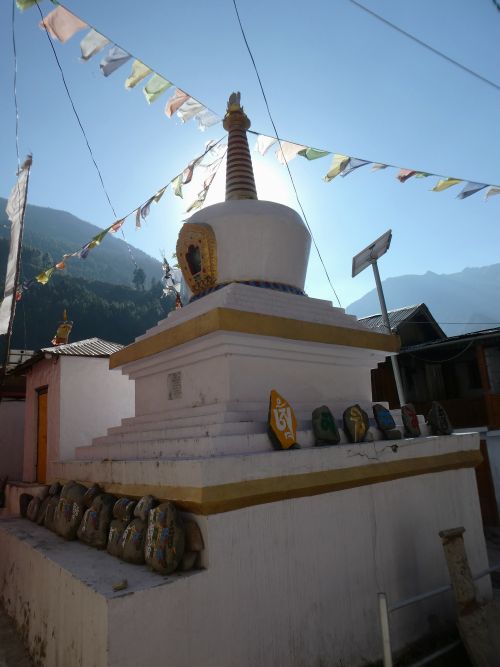
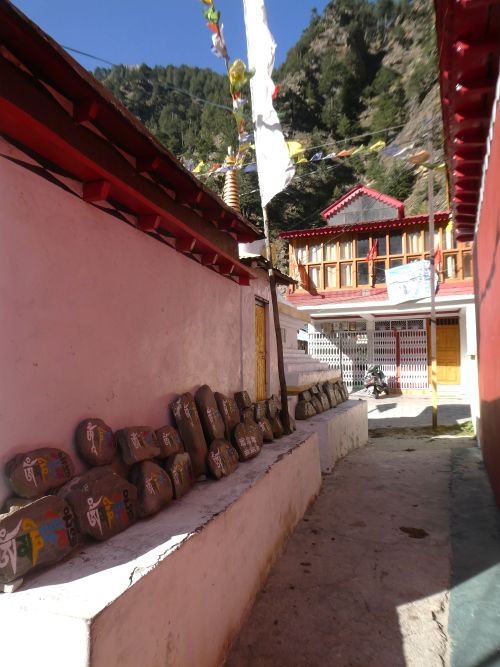


As we wandered down the narrow street, we passed lovely gardens with Tibetan prayer flags, wall art, and pretty flowers, such as marigolds. We saw houses under repair and or being painted, apple pieces drying on the roof of a house and a small restaurant. We passed pack horses and workers who were continuing the cobbling of the main street and working in the local apple orchards and vegetable gardens; and met fellow travellers who had availed themselves of the local home stays in this vibrant and active village.

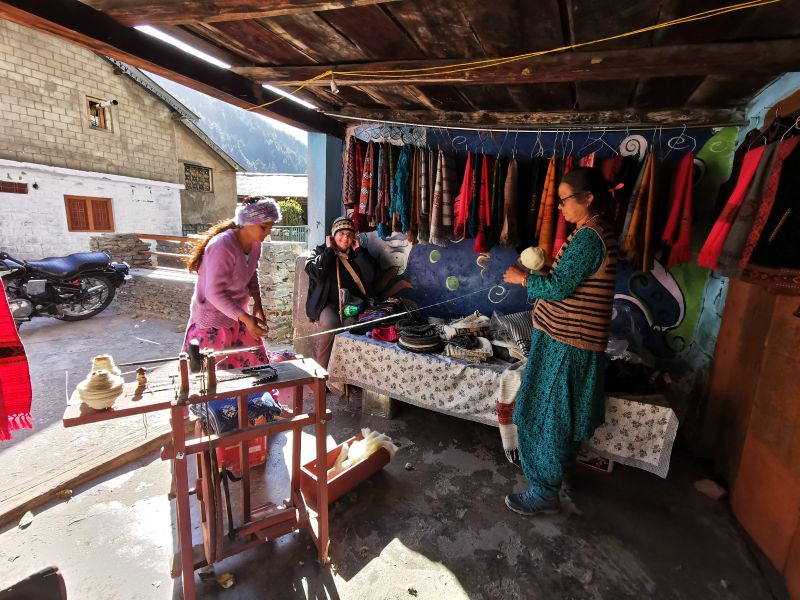

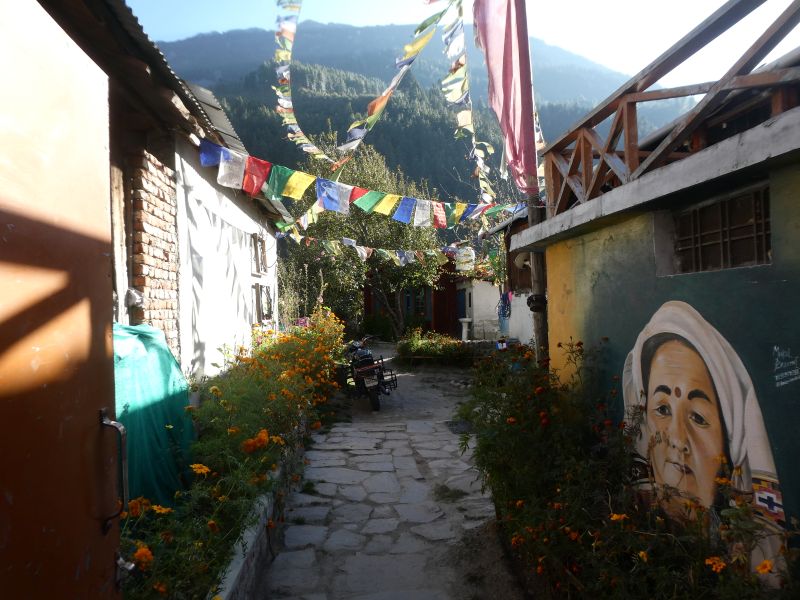
Walking back up from the end of the village, where farm access begins along small mountain tracks, we saw apple orchards in people’s back yards and passed a small shop with ‘hats’ in the window. Why is that significant? I had somehow managed to leave my favourite and favoured hat in Gangotri! We went into the shop, tried one on, and I walked out with it on my head. I quickly fell in love with it, and many people are familiar with it from my photos from here on.
It was so enjoyable being in the village although communicating as best we could with the locals was a task to behold! When we met up again with Kartik and Shoba, we decided to come back the next day to enjoy a meal at the restaurant we had passed.
Discovering Mukhawa and a return to Bagori


The following morning dawned bright and beautiful, and it was great to watch the sunrise on the mountains across the valley from our hotel.
Don’t forget to click on the collages of photos to open them up and fully enjoy them

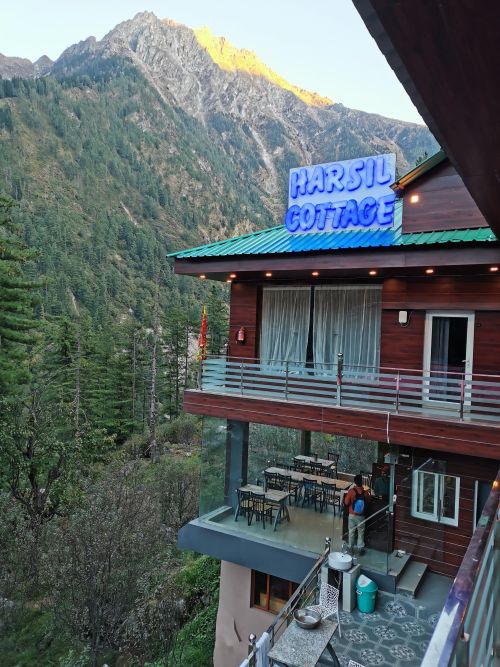
We set out for Mukhawa (sometimes spelt Mukbha), another Tibetan village near Bagori and Harsil known for its famous temple and interesting history. Mukbha sits at an altitude of 2,617m (8,600ft) and is renowned as a ‘land of penance’ (Tapobhoomi); famous and revered saints of Hindu mythology have meditated and lived in this village.
Set in the arms of the Himalayas, the main attraction is the Mukhimath (Maa Ganga) Temple where the deity from Gangotri is housed for the 6-months of winter when the temple at Gangotri is closed. The temple is a replica of the Gangotri temple and faces the valley above the Bhagirati River towards the mother temple. The gold-faced idol of Maa Ganga is accompanied by Annapoorna Devi and the silver idol of Maa Saraswati for the winter season at Mukbha. The priests at Gangotri come from the village of Mukhba and have served as the spiritual leaders and keepers at both temples over many generations. Alongside are the temples of Lord Someswhara and Narsimha.
Mukbha and the temple complex are incredibly picturesque, sitting on the steep sides of the hills surrounded by breathtaking towering mountains with lush green forests below the treeline dotted with apple orchards, villages, and the sparkles of the Bhagirati river below.



Don’t forget to click on the collages of photos to open them up and fully enjoy them
The untouched nature of the village’s scenic beauty is enhanced by the centuries of habitation by the Bhotiya community and their unique culture and traditions. They are of Indo-Tibetan origin and are known for their warm hospitality, which we also experienced in Bagori, the sister village along the mountain road.
Life here is slow-paced and relatively simple by modern world standards, where the few hundred inhabitants still live in traditional houses made of wood and stone. There are a few ‘home-stays’ which are said to be basic and comfortable and where the food that is prepared using local ingredients from the region is reported to be delicious.
When we arrived in Mukbha, we climbed the steep stairs to the temple complex following the sounds of an older village man loudly beating a welcome drum. We visited the white marble Maa Ganga temple and received a blessing from the priest before visiting the wooden temples alongside.
A powerful energy coming from the silent dieties of Lord Someswhara and Narsimha pervades the buildings.
Don’t forget to click on the collages of photos to open them up and fully enjoy them





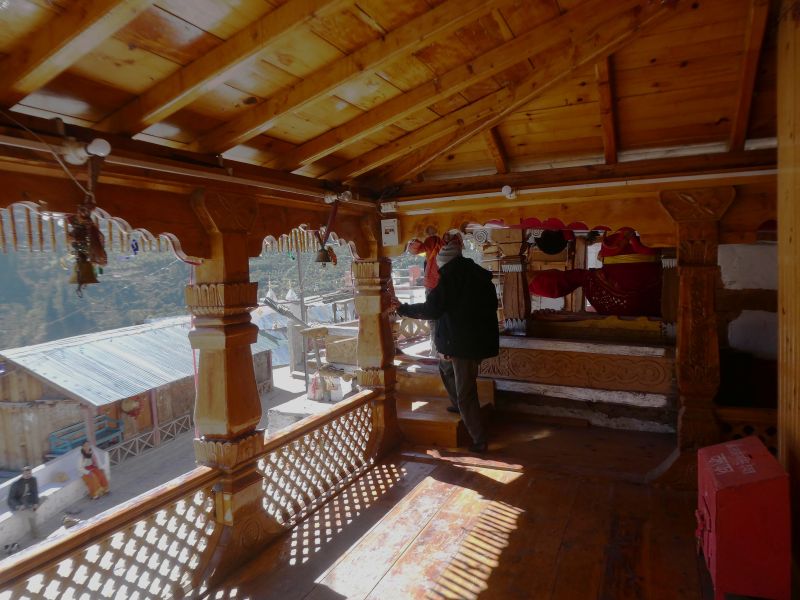
We wandered to the far end of the village in the warm sunshine, watching pack horses and their owners moving around the village and up the hill with the same curious gaze they had for us. We heard the chatter of local village women as they went about their daily lives, as their ancestors had done for centuries before our time.



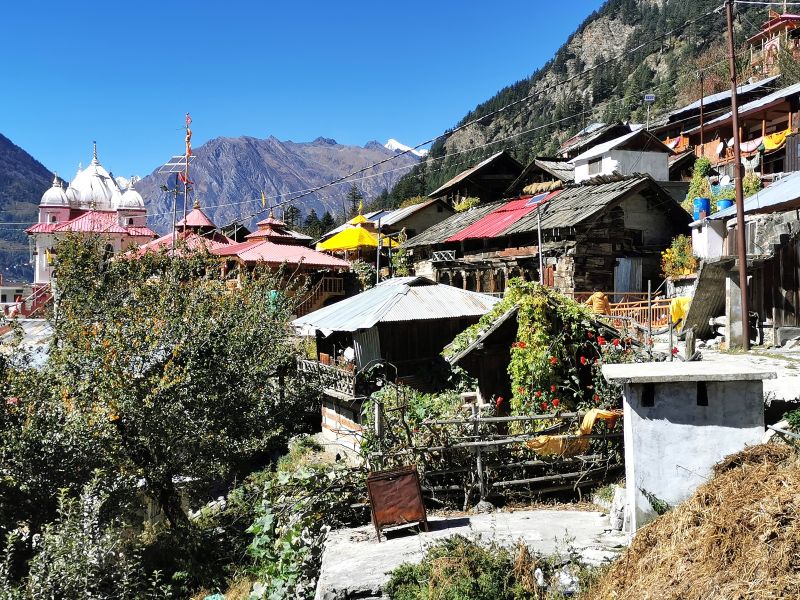


I was able to take a photo of the meadow we camped in in 2003, across the river below the village. It was hard to pull ourselves away from this wonderful experience of culture, warmth, and spiritual energy; however, we wanted to go back to Bagori and share with Kartik and Shoba what Alice and I had enjoyed the day before.





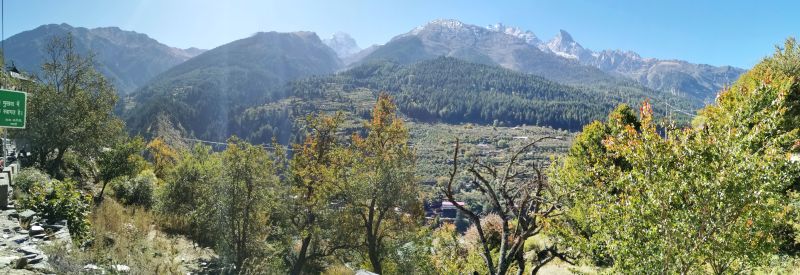
Don’t forget to click on the collages of photos to open them up and fully enjoy them
Back to Bagori
Like excited kids, Alice and I shared the village with them like we knew it well, stopping to explore and chat with locals. One young girl sat on the roof of her house, and told me she was preparing an apple and vegetable filling for momos. We enjoyed munching on the fresh apples offered from locals wishing to share their bounty, and we tried the soft dried apples that would be stored for winter. Apples were for sale, boxes were seen in many places, indicating the depth of production in the vicinity.


The history of apple growing in the Himalayas!
Apples were introduced to India in the Kullu Valley in 1860 by and Englishman called Captain R.C. Lee. A British settler, Fredrick Wilson, also known as ‘Pahari Wilson’ aged 24-years, came to Harsil as a deserter to escape the British Army around 1841. He learned the local language and customs, eventually marrying twice, to two local women, and made this region and the picturesque hamlet of Mukhwa his home. He worked in the timber trade, and introduced apple growing in about 1865, which boosted the economy and thrives even today. The apples are popular across India and internationally, and travellers can join the harvest, picking and transporting apples from the high orchards to the roadside for collection or simply join the apple harvest festival.
Sharing Bagori with our friends

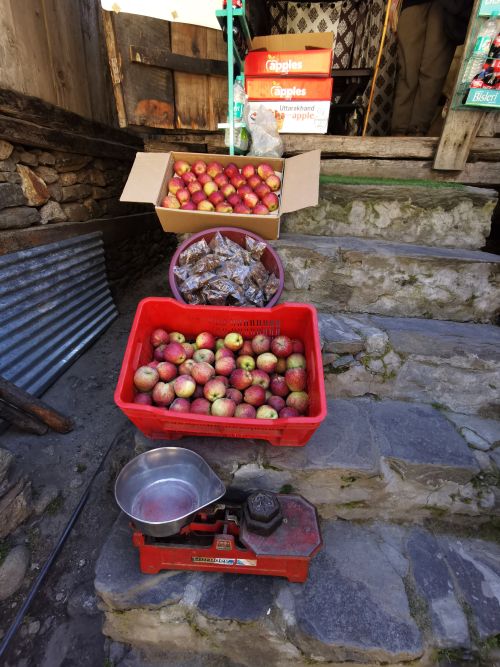
At a little restaurant in the village we ate Thukpa and momos – a little too spicy for my chilli aversion – but it was nice to enjoy the local food and drink Chouri Root tea – this root is only found above 4000m.

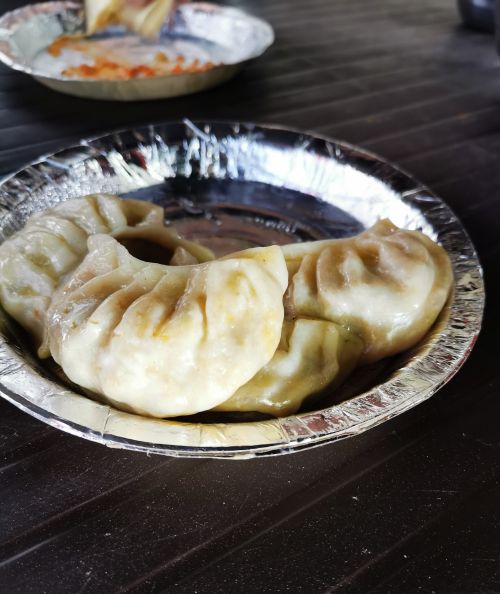
After completing our lunch, we visited the lovely orchard behind the restaurant before returning to the car and our drive back to the hotel high above the quiet river for our last night at this altitude in the Himalayan mountains.


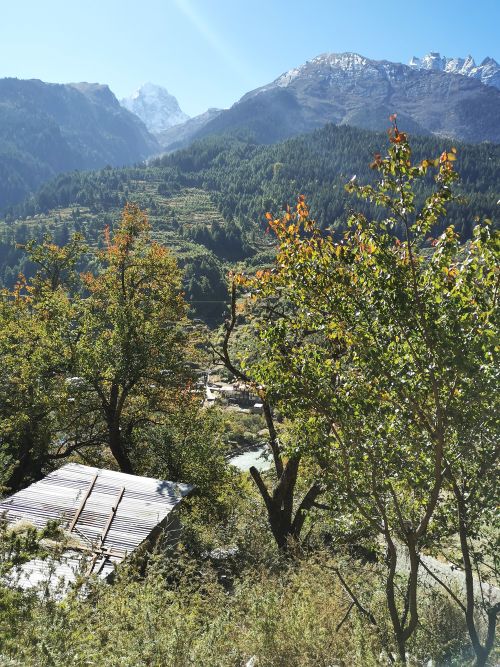

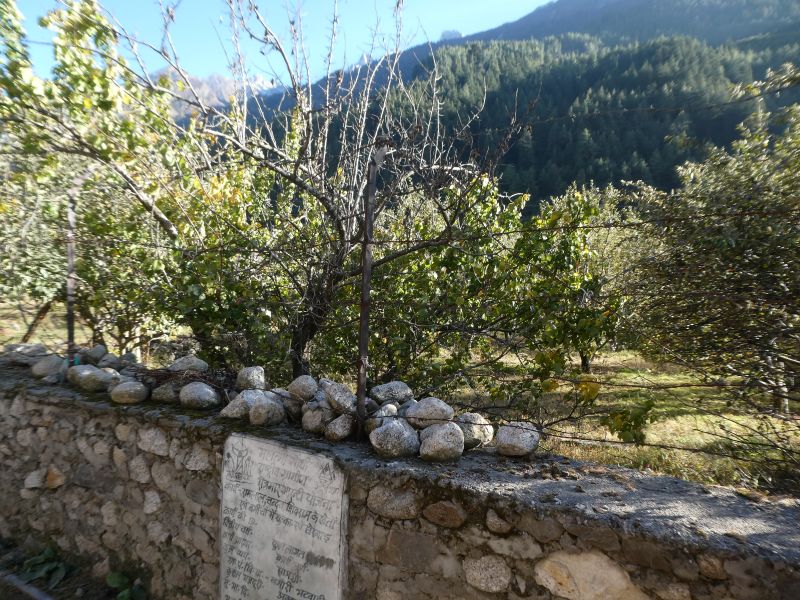
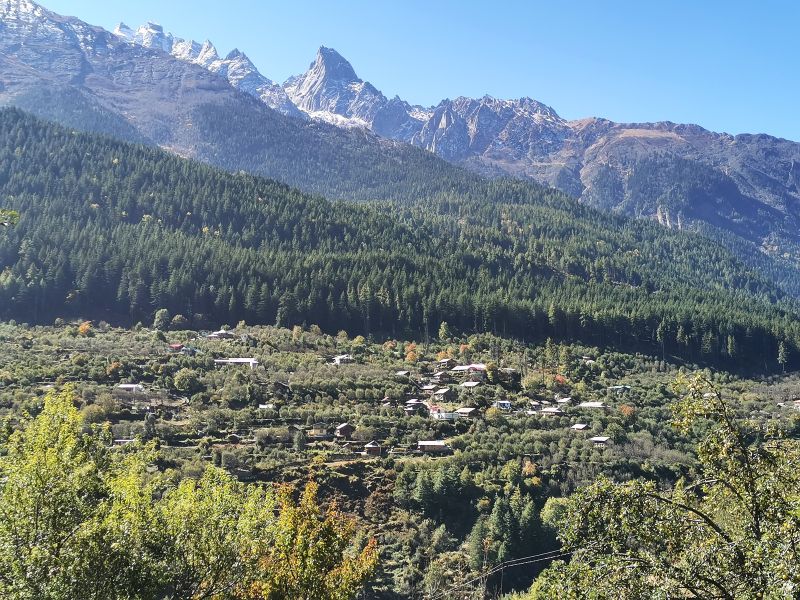
Don’t forget to click on the collages of photos to open them up and fully enjoy them
Leaving the high Himalayas
And a last look back.


The next morning, we set out for Tehri Lake, formed by the Tehri Dam, where we would enjoy some relaxation and fun. We drove down the twisting roads until we came off the beautiful mountains.


We passed Uttarkashi, and followed the Bhagirati River towards Dharasu. Further on, the river widens and forms the head of the lake.
Arriving at Tehri Dam

The road twisted and turned around the hills as we climbed high above the water, passing through villages and towns until we reached our destination of Tehri on the banks of the Reservoir. The town of New Tehri sits high up on the hill and overlooks the majestic scene below.
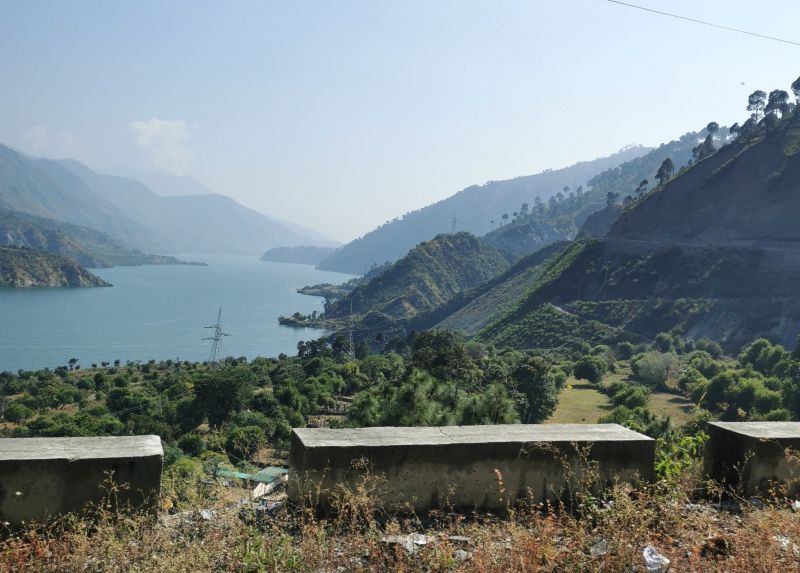

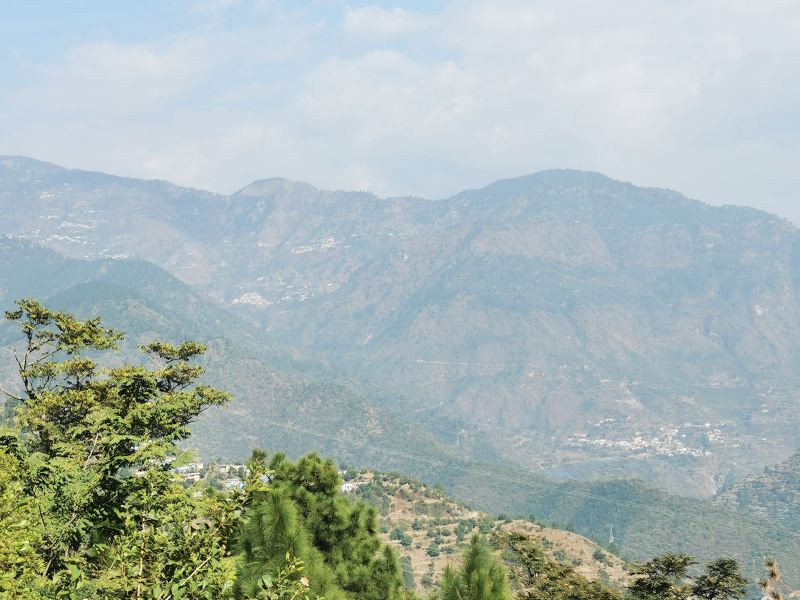

Tehri Dam’s interesting history

The 260.5m (855ft) rock and earth-fill embankment of Tehri Dam has a long history steeped in controversy and protests by environmental organisations and the region’s locals. The protests were predominantly about the displacement of the villages and the towns 100,000 inhabitants, and the ‘environmental consequences’ of building such a dam, especially regarding geological stability in a major geologic fault zone.
I first became aware of the dam and the concerns of the region when I passed through here in 2003. The dam was under construction, but I was unaware at that time of the depth of the long and controversial history. The idea for this dam was conceived in the 1940s with investigations and preliminary findings only being completed in 1961. The design was completed in 1972 but. due to feasibility studies into the financial, environmental. and social impacts, construction did not get underway until 1978. Filling of the reservoir began in 2005, and the completed dam (2006) provides electricity to a wide area of northern India and irrigation and drinking water to much of the surrounding region. Further stages of the entire project downstream are due for completion in 2025.
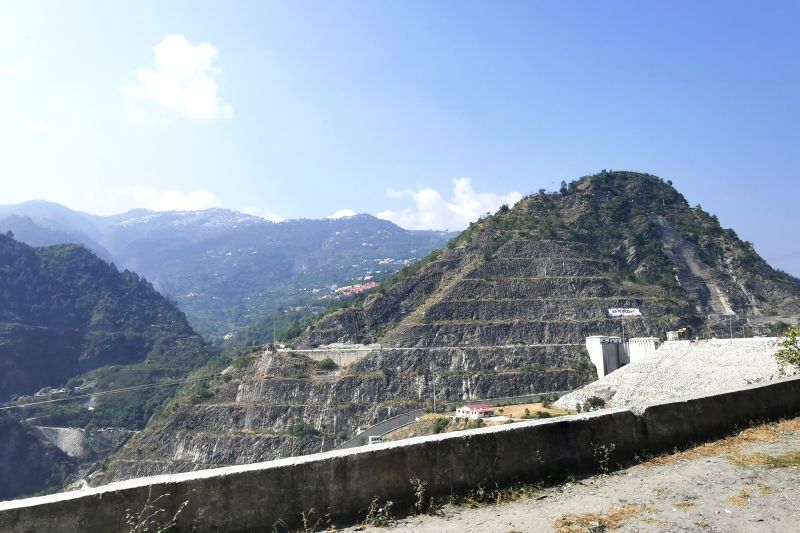

Settling into our hotel at Tehri Lake
We booked into our hotel, LeRoi Hotel Lake View, Koti, and rested, enjoying the warmer air of the lower reaches of the Himalayas and the scenery over the reservoir (lake) where kayaking, banana boat rides, jet skiing, water skiing, parasailing, and other water sports are becoming popular. Visitors can even stay on the lake itself, in the ‘floating huts’ near the Dobra Chanthi Bridge, which joins the two sides of the lake at a narrow neck between the North and South banks.
https://www.leroihotels.com/hotel-lake-view-koti
Don’t forget to click on the collages of photos to open them up and fully enjoy them

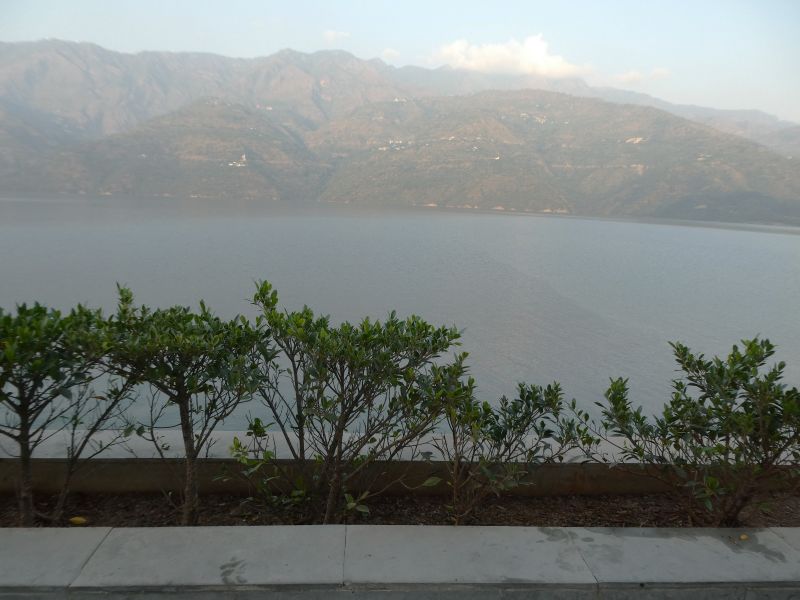
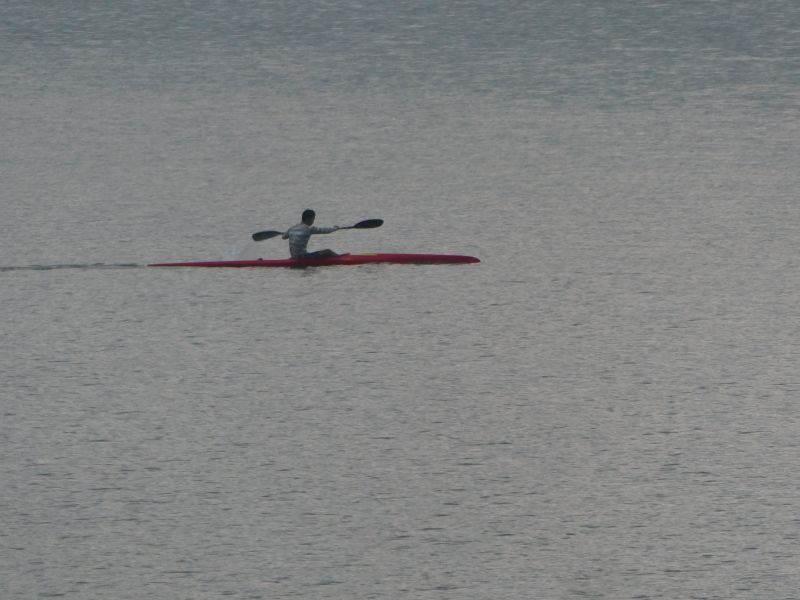

Hanging in the Himalayas


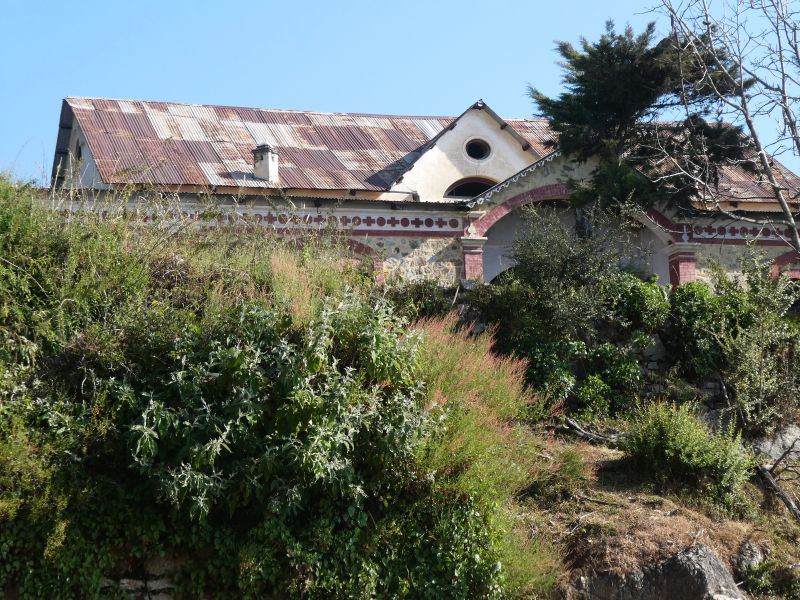
Having talked about what we would do for our time by the lake, we made arrangements to go tandem paragliding the next day. We woke to a magnificent sunrise before we were collected for the 1.5-hour drive from our hotel to the jump-off point.
Don’t forget to click on the collages of photos to open them up and fully enjoy them



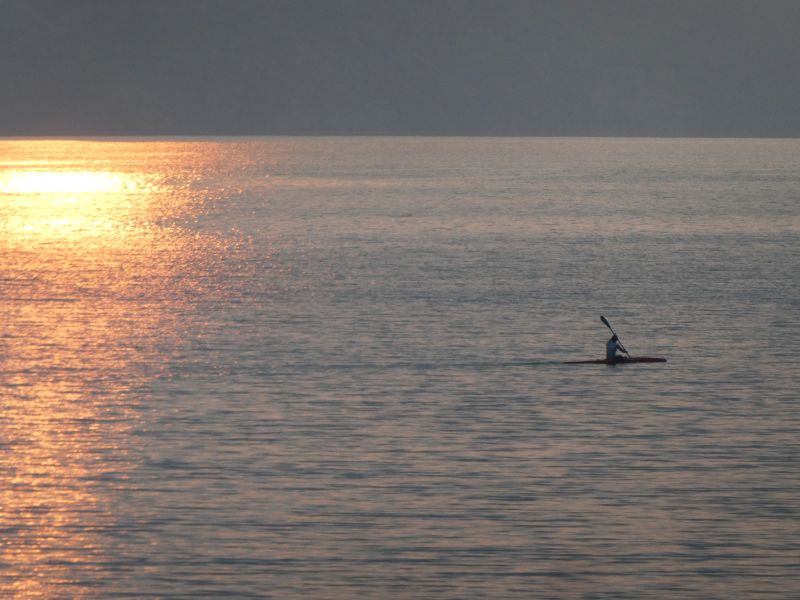
Shoba, myself, and eventually 6 Indian young men were in a small van hurtling along the roads to some funky music, stopping here and there to collect equipment and people. We crossed the Dobra Chanthi Bridge and admired the calm waters of the lake with the floating huts shrouded in early morning mist.

We began to drive upwards, passing through villages as we twisted and turned our way up the mountain. Finally we arrived at our take-off point, 3,658m (12,000ft) up in the mountains from where we glide down and across the lake and land near the hotel at a height of approx 1,676m (5,500ft). The flight takes around 15 minutes.
We watched many young people soaring off into the early morning sun, being instructed by the team on the ground as they became specks on the horizon above the lake. Nearby is an adventure school, and these students get to do this regularly!



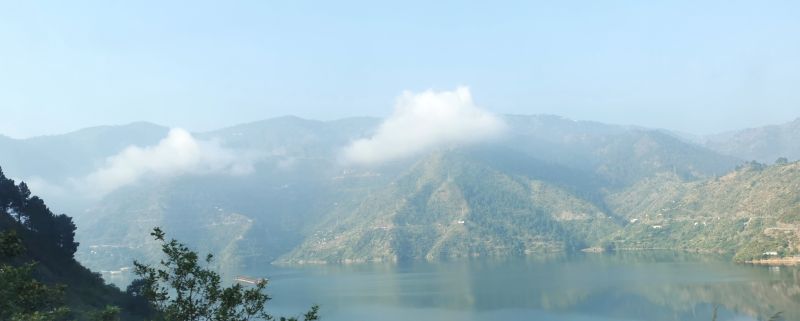
The low cloud got burned off by the rising sun, and soon it was our turn to fly in the clear blue cloudless sky. I watched Shoba ‘suit up’ and take off with her pilot, then it was my turn.
I had not felt nervous at all, but with calm courage came up to the point where we were ready to take off. My pilot, the owner of the company, asked if I was nervous. I felt a short pang of butterflies pass quickly through my body, and then it was gone. I was ready and excited to feel the ‘wind beneath my wings’. Once we were underway, I loved the feeling of just hanging in the air, harnessed into my seat, feet dangling thousands of feet above the lake below. My pilot flew over his village high up on this mountain range, pointing out his house and telling me about his family who lived in this small mountain hamlet at about 3,048m (10,000 ft). I never knew I could feel so light and free, in this harnessed seat, just sitting. It felt like zero movement, no sound, no where to go, nothing to do but just be, high over the lake, the Himalayas all around me. My pilot had the most gentle energy, I felt his passion for the sport of paragliding, and his love for the Himalayas was palpable. I absorbed this passion for flying right there, and thought, ‘if this never ends, it will be ok’. Eventually, we did some acrobatics, turning in circles, and the thrill of the twirl was a new kind of ‘wow factor’ in this short flight from the top of the mountain to the landing point. I thought I would enjoy this experience, but I had no idea how amazing it would be, nor the sense of expansion high up in the air, as I sat motionless, that I would I experience in the moment. I would certainly do this again, but I cannot imagine a better place to have this experience than in the Himalayas.
We walked back to the hotel and shared our experiences with Kartik and Alice, who had watched from afar.
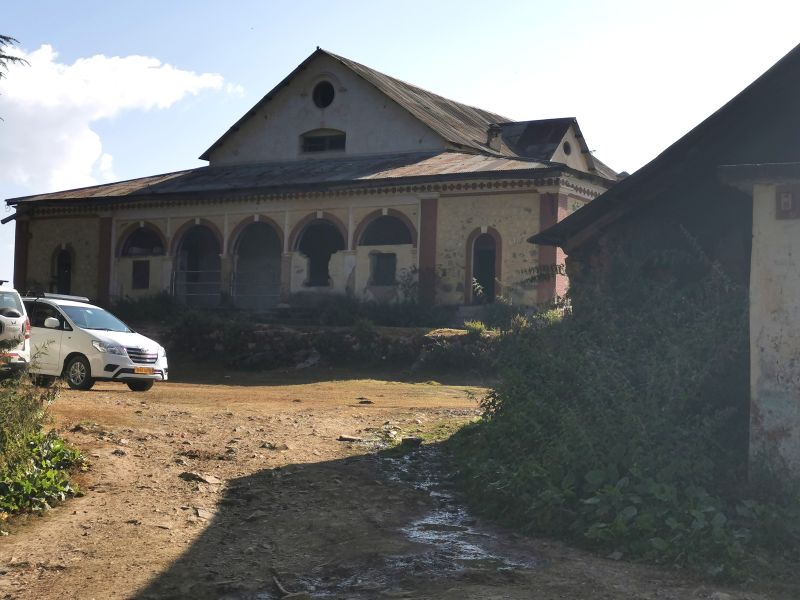

Selfie Point – Peepal Dali Bridge


After a late breakfast – we didn’t have time to eat given the early morning start – we were back in the car and driving towards the Tehri Dam—but this was not our destination. We drove around the hills towards the Peepal Daali Bridge and the ‘Selfie Point Hotel’ where we had a delicious lunch, took lots of photos, and enjoyed the euphoria of our paragliding experience among the happy crowd also enjoying this lovely spot at the end of the lake where it has already merged to become the Bhilangna River.
Don’t forget to click on the collages of photos to open them up and fully enjoy them




The Bhagirathi River branches off at the site of the Tehri Dam and flows south to where it meets the Alaknanda River coming from the Badrinath and Mana area, to then become the Ganges. We drove back to the hotel, enjoying the amazing views from the approach to, and then the drive across the dam itself, with the lake on one side and the huge drop to the river far below on the other side. It is a surreal thinking about the tons and tons of rock and earth holding up the road and the lake.
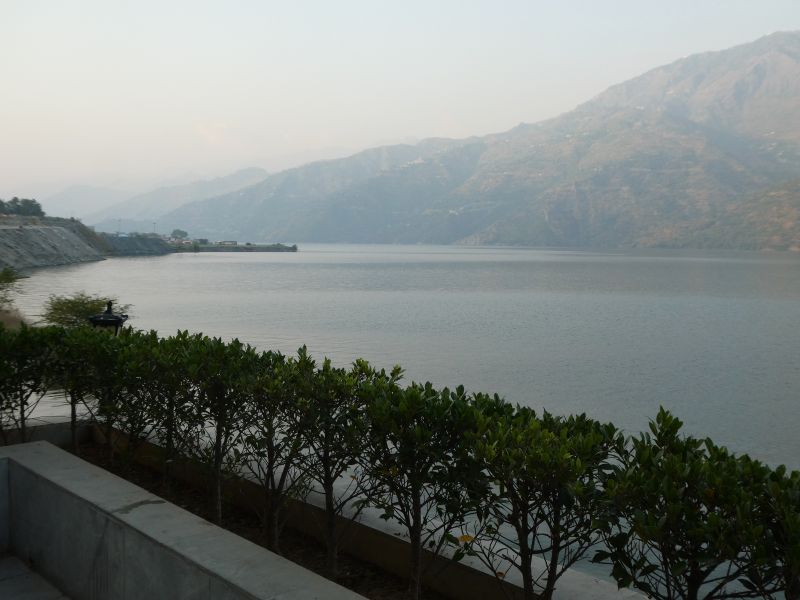
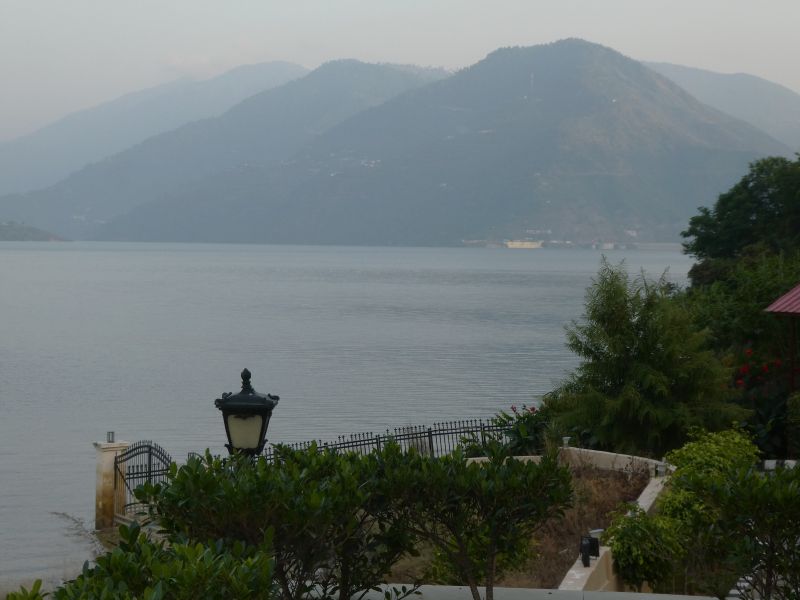
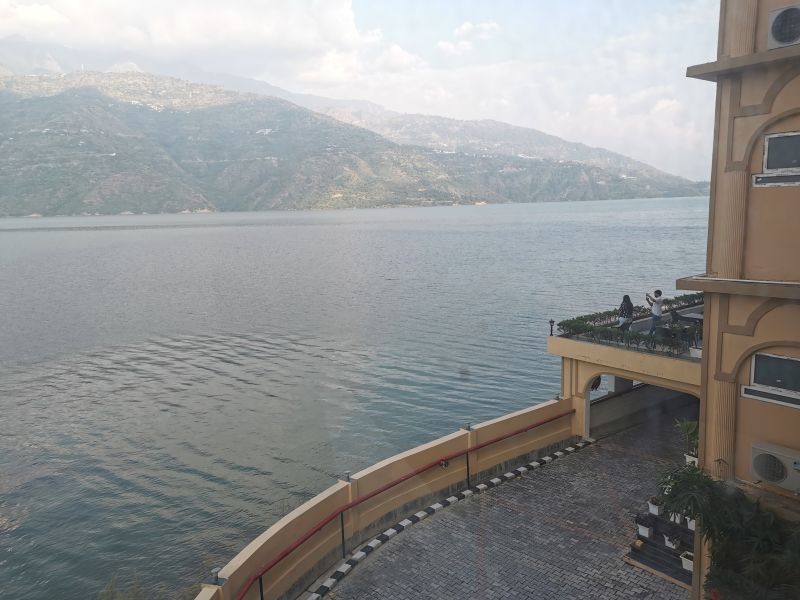
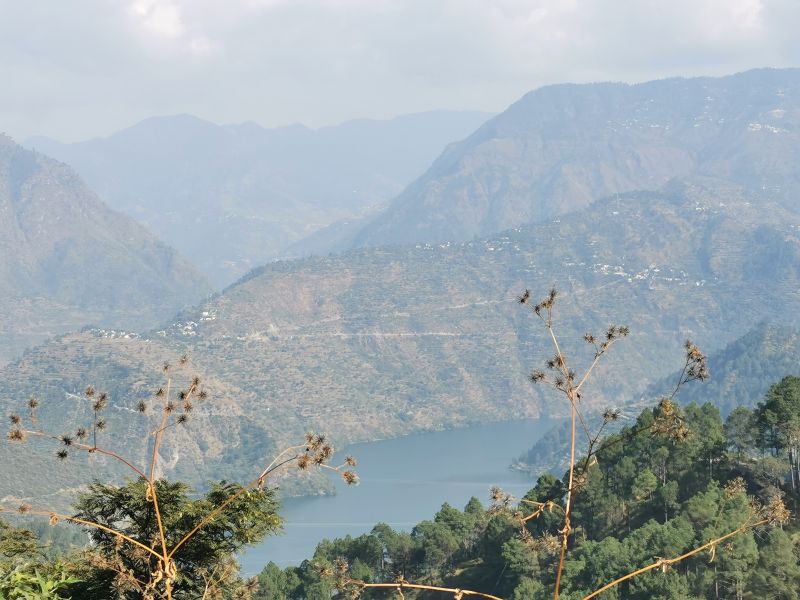
Back at the hotel, we rested, chatted and enjoyed our last evening in the Himalayas; the next day we would take the long drive back to Delhi.
The long road home…
Leaving early the next morning, we drove up into the hills and, with the lake behind us and our memories fresh in our hearts and minds, we passed through towns and villages on the way to Rishikesh, Haridwar, and onto the plains. We stopped for lunch at Khatauli on the way to Delhi – note the delight on Kartik’s face when his food was delivered!
Arriving in Delhi, we booked into our hotel, the ‘Hotel Golden Grand’ and relaxed for the evening.
The following day, we bid farewell to Alice as she embarked on her journey back to Aotearoa New Zealand. Shoba and I went to explore Connaught Place, a famous shopping precinct with historical buildings, high-end shops and markets. It is the cultural and commercial ‘hub’ in Delhi, built by the British Raj between 1929 and 1933, now owned by the Government of India. It has a central park and is built in circles with a modern underground mall, the above-ground shops and offices are of a colonaded, beautiful European Renaissance and classical Georgian style architecture, with wide inner roads around the park. Posh restaurants, eclectic cafes, trendy pubs and nightclub bars abound, and many great Indian and international cuisines are to be found. We met Suresh, Kartik’s dad, our long-time travel friend and travel organiser, where we could personally thank him for being part of organising our trip.
Coffee and cocktails in Delhi
We wandered the market lanes as the shops opened mid-morning, and later found our way to a stunning restaurant—’Plum Coffee and Cocktails’—above the street in one of the beautiful colonaded buildings where we enjoyed the city vibe, good food, coffee, and the ambience.
The perfect place to relax after our journey, we chatted about our trip and how wonderful it was to be together again, to share time with Alice and Kartik, and how lucky we are to be such good friends. We talked about the precious moments we share, the memories we have made and those yet to be made!


Relaxation and Fireworks!
From here it was to the airport and back to Chennai, where we settled back in to Shoba’s home, saw the Diwali fireworks, ate and shopped at local artisan and expat restaurants, and reintegrated into city life.

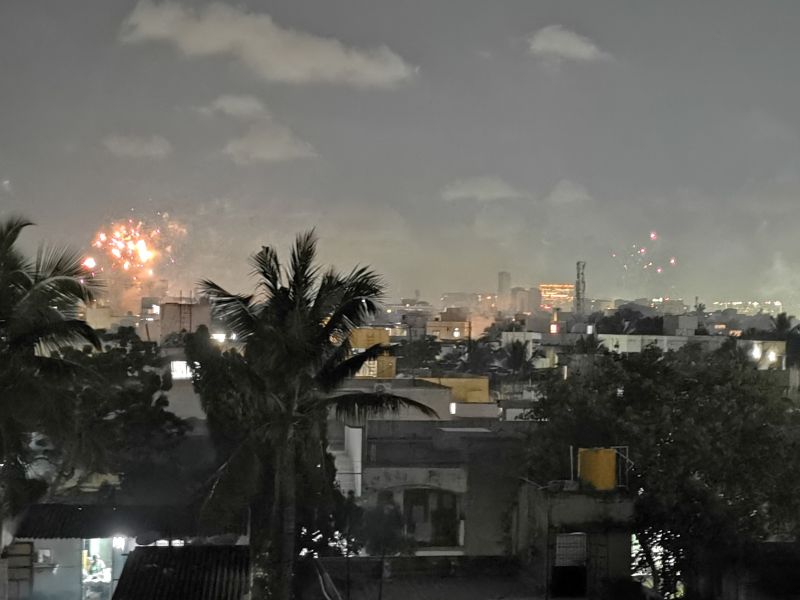
Amethyst – Garden, restaurant and shopping
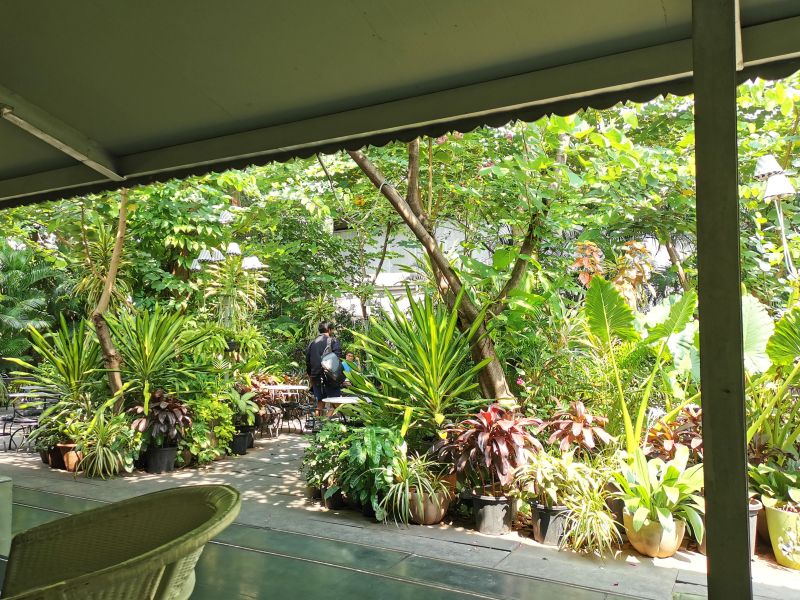

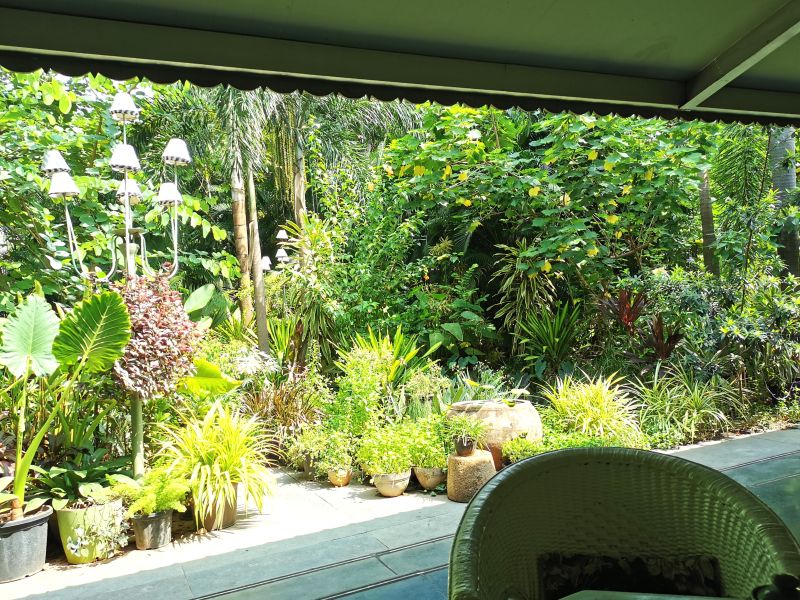

So that ends the story of this 3 part series as we journeyed through a small part of the extensive Indian Himalayas. But, as ever, there is more travel stories to come, new places visited and places revisited. Keep enjoying, keep planning and keep travelling!!

